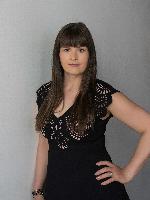Creating in the Classroom: 3 Tech-Infused Projects to Engage Your Learners
,
Colorado Convention Center, Bluebird Ballroom Lobby, Table 1
Presenters


Session description
Purpose & objective
Attendees will explore 3 ideas for classroom projects that involve students creating a digital product to showcase their knowledge and skills. Participants will explore examples from different grade levels and subject areas.
Outline
Introduction (5 minutes)
background and teaching role
how we use these activities
why it’s important to promote student creation (vs. only consumption)
Digital Posters (15 minutes)
examples from different grade levels and subject areas
technology tools that can be used for this project (Microsoft, Google, other)
audience interaction: sharing in chat discussion -- examples and ideas for using this idea in their own classroom or school
hands-on creation: design a digital poster
Book Creation (20 minutes)
examples from different grade levels and subject areas
technology tools that can be used for this project (Microsoft, Google, other)
hands-on creation: participants will collaborate during guided creation time to create their own book following the format of one of my classroom learning activities, which includes a short read-aloud and then hands-on creation of a book based on the model text
audience interaction: sharing in chat discussion -- examples and ideas for using this idea in their own classroom or school
Which One Doesn’t Belong (15 minutes)
examples from different grade levels and subject areas
technology tools that can be used for the project (Microsoft, Google, other)
hands-on creation: participants will have guided creation time to create their own “which one doesn’t belong” activity for their own students
audience interaction: option to share their creations (crowd-sourcing of resources in a shared location to use after the workshop, plus the chance to learn from each other!)
Wrap Up and Questions (5 minutes)
Supporting research
If teachers believe there are benefits for students, they are more likely to adopt technology. This presentation provides an opportunity for educators to see the benefits of integrating technology. We provide clear ideas for linking the projects to different subject areas/goals and allow teachers to experience the creation process that their students will experience if they try these activities. A 2010 study by Ottenbreit-Leftwich et al. examined eight award-winning teachers’ use of technology. Ottenbreit-Leftwich et al. found that the teachers studied were motivated to use technology because they believed that technology would support student learning and help prepare students for the future. The teachers studied believed that technology could help engage and motivate students, improve student comprehension, promote higher-order thinking and encourage the development of important skills (Ottenbreit-Leftwich et al., 2010). An earlier study by Hughes (2005) resulted in a similar conclusion that “the power to develop innovative technology-supported pedagogy lies in the teacher’s interpretation of the technology’s value for instruction and learning in the classroom (p. 297). Blackwell et al. (2013) also found this to be true for early childhood educators. These findings indicate that teachers are more likely to adopt technology if they believe it will result in improved student learning.
Blackwell, C. K., Lauricella, A. R., Wartella, E., Robb, M., & Schomburg, R. (2013). Adoption and use of technology in early education: The interplay of extrinsic barriers and teacher attitudes. Computers & Education, 69, 310–319. https://doi.org/10.1016/J.COMPEDU.2013.07.024
Hughes, J. (2005). The role of teacher knowledge and learning experiences in forming technology-integrated pedagogy. Journal of Technology and Teacher Education, 13(2), 277–302.
Ottenbreit-Leftwich, A. T., Glazewski, K. D., Newby, T. J., & Ertmer, P. A. (2010). Teacher value beliefs associated with using technology: Addressing professional and student needs. Computers and Education, 55(3), 1321–1335. https://doi.org/10.1016/j.compedu.2010.06.002
Session specifications
Tablet: Android, iOS, Windows
Facilitator
- Model and nurture creativity and creative expression to communicate ideas, knowledge or connections.
Creative Communicator
- Students create original works or responsibly repurpose or remix digital resources into new creations.
- Students communicate complex ideas clearly and effectively by creating or using a variety of digital objects such as visualizations, models or simulations.
 Return
Return Participate and share: Poster
Participate and share: Poster  Trips and Tours
Trips and Tours